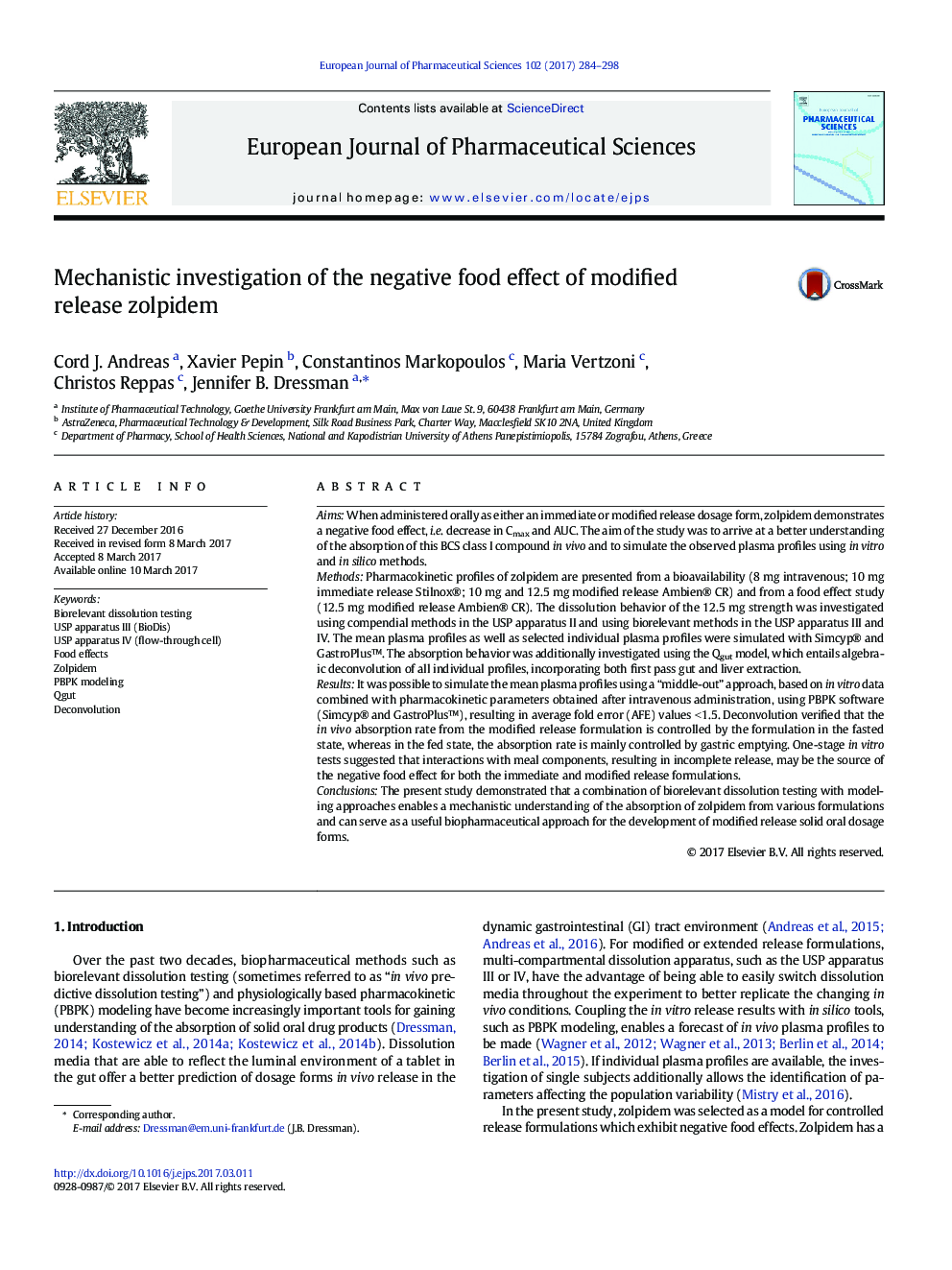| کد مقاله | کد نشریه | سال انتشار | مقاله انگلیسی | نسخه تمام متن |
|---|---|---|---|---|
| 5547825 | 1556148 | 2017 | 15 صفحه PDF | دانلود رایگان |
AimsWhen administered orally as either an immediate or modified release dosage form, zolpidem demonstrates a negative food effect, i.e. decrease in Cmax and AUC. The aim of the study was to arrive at a better understanding of the absorption of this BCS class I compound in vivo and to simulate the observed plasma profiles using in vitro and in silico methods.MethodsPharmacokinetic profiles of zolpidem are presented from a bioavailability (8 mg intravenous; 10 mg immediate release Stilnox®; 10 mg and 12.5 mg modified release Ambien® CR) and from a food effect study (12.5 mg modified release Ambien® CR). The dissolution behavior of the 12.5 mg strength was investigated using compendial methods in the USP apparatus II and using biorelevant methods in the USP apparatus III and IV. The mean plasma profiles as well as selected individual plasma profiles were simulated with Simcyp® and GastroPlusâ¢. The absorption behavior was additionally investigated using the Qgut model, which entails algebraic deconvolution of all individual profiles, incorporating both first pass gut and liver extraction.ResultsIt was possible to simulate the mean plasma profiles using a “middle-out” approach, based on in vitro data combined with pharmacokinetic parameters obtained after intravenous administration, using PBPK software (Simcyp® and GastroPlusâ¢), resulting in average fold error (AFE) values < 1.5. Deconvolution verified that the in vivo absorption rate from the modified release formulation is controlled by the formulation in the fasted state, whereas in the fed state, the absorption rate is mainly controlled by gastric emptying. One-stage in vitro tests suggested that interactions with meal components, resulting in incomplete release, may be the source of the negative food effect for both the immediate and modified release formulations.ConclusionsThe present study demonstrated that a combination of biorelevant dissolution testing with modeling approaches enables a mechanistic understanding of the absorption of zolpidem from various formulations and can serve as a useful biopharmaceutical approach for the development of modified release solid oral dosage forms.
Graphical Abstract89
Journal: European Journal of Pharmaceutical Sciences - Volume 102, 1 May 2017, Pages 284-298
